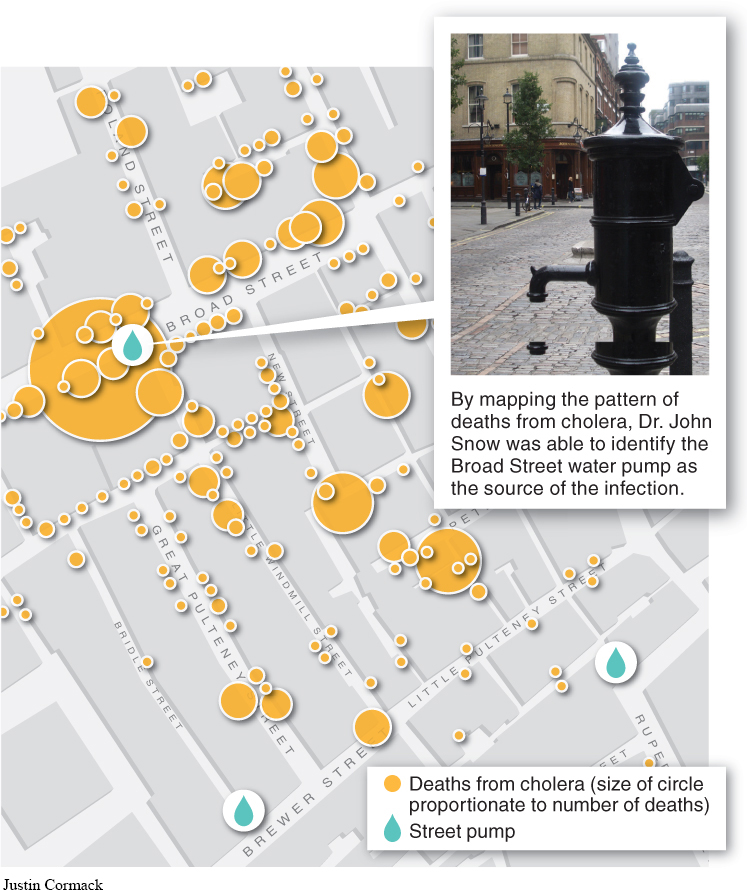13.8: Bacteria cause many human diseases.
The number of pathogenic (disease-
The cholera epidemic that devastated London in 1854 became a milestone in epidemiology (the study of the occurrence of disease outbreaks), when Dr. John Snow identified the Broad Street pump as the source of infection by mapping the pattern of deaths (FIGURE 13-11). When Dr. Snow persuaded the authorities to shut down the pump by removing the handle, new cases of cholera in the area dropped sharply.

Cholera epidemics are a continuing threat, especially in areas without effective sanitation. Epidemics of cholera are occurring now in parts of Iraq where the sewage systems have been destroyed and in Haiti, following the earthquake of 2010. The strains of cholera found in these areas are especially potent; as the bacteria multiply inside their hosts, they cause severe diarrhea with a massive loss of water. Victims of these severe strains of cholera are incapacitated and soon die, but before they die they release billions of cholera bacteria in diarrhea—
546
Streptococcus pyogenes is a normal part of the bacterial community of your nose and mouth. Normally it is harmless, and many people never experience any of the diseases it can cause. But when the population of S. pyogenes is not held in check by competition with other members of the bacterial community, it can become a pathogen. Strep throat (more formally known as “streptococcal pharyngitis”) is the most common disease caused by S. pyogenes; it produces a severe sore throat and a distinctive rash of red abscesses with white pus at the top of the throat (FIGURE 13-12). Some strains of S. pyogenes produce a toxin that is released into the bloodstream and produces a red rash that spreads across the skin—

TAKE-HOME MESSAGE 13.8
Some bacteria always cause disease, and others are harmful only under certain conditions. For example, Streptococcus pyogenes can be harmless, but under some conditions it releases toxins that are responsible for strep throat, scarlet fever, and necrotizing fasciitis.
You examine a sample of bacteria taken from your mouth and find that one of the species is a strain of Streptococcus pyogenes, the bacteria that can cause strep throat and scarlet fever. Should you visit a doctor?